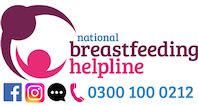Before your baby is born, and for the first few days afterwards, your breasts will produce colostrum. Colostrum is a highly valuable fluid. It is rich in protein, immunoglobulins, vitamins, anti-infective agents, living cells and minerals. It can be described as being low volume and high yield; there is plenty for your baby in the small quantities needed for immediate absorption by the digestive system.
Mature milk begins to mix with colostrum a few days after delivery. This is often referred to as your milk “coming in”. When your milk comes in, your breasts may feel heavier or fuller, or even become engorged, although this isn’t the case for everyone.
When your baby begins a feed, the mature milk is high in water, water-soluble vitamins, protein, and lactose, as well as containing some fat.
As the feed progresses, the milk becomes creamier and richer in essential fats and fat-soluble vitamins. There is still fat throughout the feed; it just gets more concentrated as the feed goes on.
In general, the softer your breast is, the higher the volume of fat available, and the fuller your breast is, the lower the fat content. This means that feeds clustered together in the evening or when your baby is especially hungry will give more calories to satisfy this hunger. The amount of fat in your milk increases gradually during a feed, there is not a sudden change.

